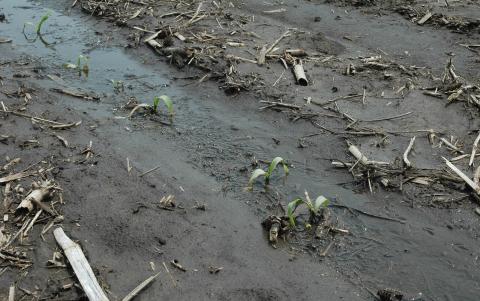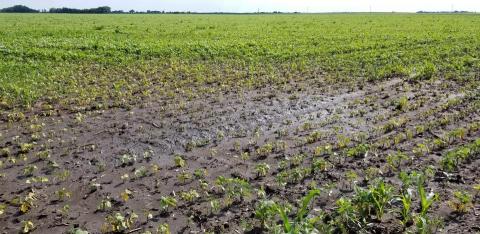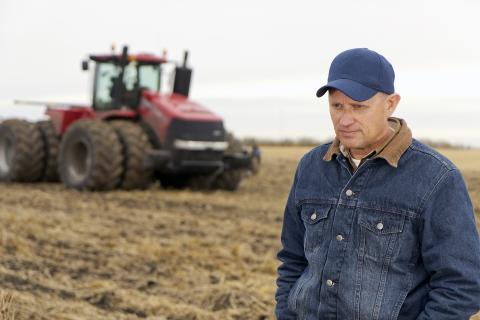Tax Consequences of Weather-Related Sales
May 31, 2019
How do tax laws apply to crop and livestock losses due to flooding and should they be applied this year? Consider the effects for 2019, 2020 and afterward from using some of these options.

Corn Establishment and Growth in Saturated Soils: A Brief Review of New Research
May 31, 2019
How long can seedling corn survive under flooded conditions? A review of current scientific literature offers new understandings of when and how plant injury occurs and what factors affect it.
Response of Germinating and Early Season Soybeans to Flooding
May 30, 2019
Injury to germinating and seedling soybean from flooding depends on several factors, including soybean growth stage, flood duration, and air and soil temperature and varies the varieties. Pythium and Phytophthora are two diseases to scout for after flooding.
Options for Removing Sand Deposited by Floods
May 10, 2019
Once waters receded after the March 2019 floods, many Nebraskans found sand and sediment deposited on their fields and properties. The Nebraska Department of Environmental Quality offers several options for sand removal, one of which requires US Army Corps approval.
Replanting Corn: Things To Do and Think About
May 24, 2024
Recent flooding events beginning May 20-21, 2024 in portions of the state have some concerned about the need to replant corn when waters recede. It’s important to assess potential recovery before making replant decisions.
Updates on Federal Programs to Aid Flood Recovery
May 3, 2019
Funds were made available or application deadlines were extended for three USDA NRCS flood recovery programs.
Workshop: Recovering River Frontage Ag Land
May 2, 2019
After spring flooding, many river frontage pastures and crop fields were left with sand and silt deposits ranging from a few inches to up to three feet. Recovering that land for production will be the focus of a May 13 on-site workshop near Ravenna.
New Wellness Resources for Farm and Ranch Families
April 26, 2019
Agriculture is a stressful occupation and while it provides numerous rewards, it does not come without challenges. These tips and resources can help you and your family better understand the effects of stress on your health and manage them.



